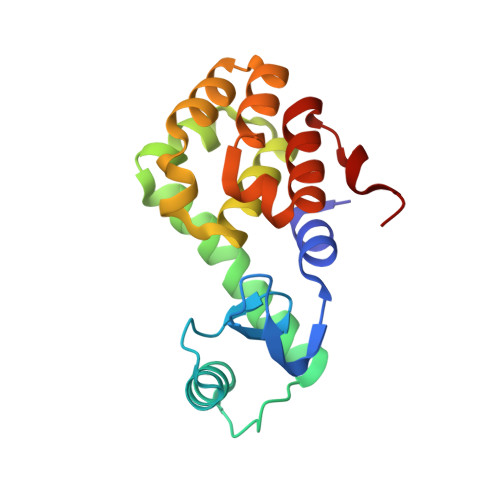Creation of Cross-Linked Crystals With Intermolecular Disulfide Bonds Connecting Symmetry-Related Molecules Allows Retention of Tertiary Structure in Different Solvent Conditions.
Hiromoto, T., Ikura, T., Honjo, E., Blaber, M., Kuroki, R., Tamada, T.(2022) Front Mol Biosci 9: 908394-908394
- PubMed: 35755825
- DOI: https://doi.org/10.3389/fmolb.2022.908394
- Primary Citation of Related Structures:
7XE5, 7XE6, 7XE7, 7XE9, 7XEA - PubMed Abstract:
Protein crystals are generally fragile and sensitive to subtle changes such as pH, ionic strength, and/or temperature in their crystallization mother liquor. Here, using T4 phage lysozyme as a model protein, the three-dimensional rigidification of protein crystals was conducted by introducing disulfide cross-links between neighboring molecules in the crystal. The effect of cross-linking on the stability of the crystals was evaluated by microscopic observation and X-ray diffraction. When soaking the obtained cross-linked crystals into a precipitant-free solution, the crystals held their shape without dissolution and diffracted to approximately 1.1 Å resolution, comparable to that of the non-cross-linked crystals. Such cross-linked crystals maintained their diffraction even when immersed in other solutions with pH values from 4 to 10, indicating that the disulfide cross-linking made the packing contacts enforced and resulted in some mechanical strength in response to changes in the preservation conditions. Furthermore, the cross-linked crystals gained stability to permit soaking into solutions containing high concentrations of organic solvents. The results suggest the possibility of obtaining protein crystals for effective drug screening by introducing appropriate cross-linked disulfide bonds.
Organizational Affiliation:
Institute for Quantum Life Science, National Institutes for Quantum Science and Technology, Ibaraki, Japan.
















